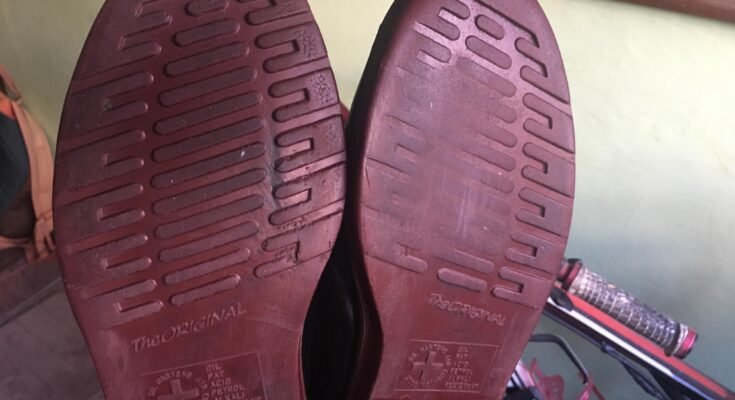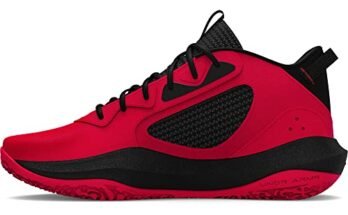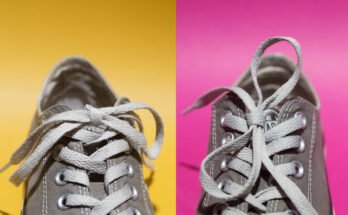The sole of the shoe wears out due to friction from walking on various surfaces. This constant contact causes the material to deteriorate over time.
Have you ever noticed how the soles of your shoes seem to wear out faster than the rest of the shoe? It’s not just a design flaw; there’s a reason behind it. The wear and tear on the sole of a shoe are mainly caused by the friction created when walking on different surfaces.
Whether you’re strolling on asphalt, concrete, or rough terrain, each step contributes to the gradual breakdown of the sole. Understanding why this happens can help you choose the right shoes for your specific needs and potentially prolong their lifespan. Let’s delve deeper into this common footwear phenomenon.
Causes Of Shoe Sole Wear
Shoe sole wear is a common occurrence that affects the lifespan of shoes. Understanding the causes of shoe sole wear can help you take better care of your shoes, prolonging their lifespan and saving you money in the long run. The following are some of the main causes of shoe sole wear:
Walking Habits
One of the main causes of shoe sole wear is walking habits. The way you walk can have a significant impact on the wear and tear of your shoes. For example, if you tend to drag your feet when you walk, it can cause the sole of your shoe to wear out faster. Similarly, if you tend to put more weight on one foot than the other, it can cause uneven wear on the sole of your shoe.
Type Of Surface
The type of surface you walk on can also have an impact on the wear and tear of your shoe soles. Walking on rough surfaces like concrete or asphalt can cause the sole of your shoe to wear out faster than walking on smoother surfaces like carpet or wood. Additionally, walking on surfaces that are wet or slippery can cause your shoes to lose traction and slip, which can also lead to sole wear.
Quality Of Materials
The quality of the materials used to make the shoe sole can also impact its lifespan. Shoes made with lower quality materials are more likely to wear out faster than those made with higher quality materials. Additionally, the way the sole is attached to the shoe can impact its lifespan. Shoes with glued-on soles are more likely to wear out faster than those with stitched-on soles.
In conclusion, understanding the causes of shoe sole wear can help you take better care of your shoes and prolong their lifespan. By being mindful of your walking habits, choosing surfaces carefully, and investing in high-quality shoes, you can keep your shoes looking and feeling great for longer.
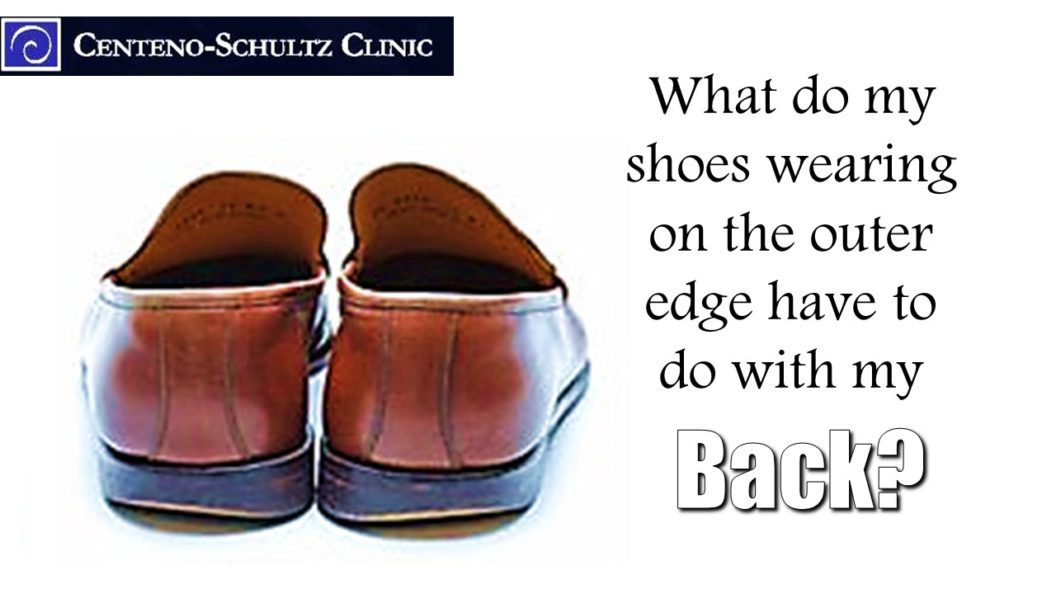
Credit: centenoschultz.com
Effects Of Worn-out Soles
As you walk, the soles of your shoes are constantly exposed to friction and impact, causing them to wear out over time. This wear and tear can be accelerated by factors such as the type of surface you walk on, your gait, and the quality of the shoe’s material.
Regular use of worn-out soles can lead to discomfort, poor posture, and increased risk of injury.
Impact On Comfort
- Reduced cushioning: Worn-out soles lose their ability to absorb shock effectively, leading to increased impact on your feet and joints. This can result in discomfort, especially during extended periods of walking or standing.
- Uneven support: As the soles wear down, they may develop uneven surfaces or areas with decreased support. This can cause your feet to feel unstable and lead to issues such as arch pain or plantar fasciitis.
- Decreased insulation: Worn-out soles may lose their ability to provide insulation from cold or heat, making your feet more susceptible to temperature extremes and discomfort.
Aesthetics
- Degraded appearance: Worn-out soles often develop visible signs of damage such as cracks, tears, or worn-down tread patterns. This can detract from the overall appearance of your shoes and make them look old or unkempt.
- Reduced durability: As the soles wear down, the structural integrity of the shoe may be compromised, leading to further deterioration of other components such as the upper material or stitching.
Foot Health
- Increased risk of injury: Worn-out soles provide less traction and stability, increasing the likelihood of slips, trips, and falls. Additionally, inadequate support and cushioning can contribute to overuse injuries such as shin splints, tendonitis, or stress fractures.
- Alignment issues: A lack of proper support from worn-out soles can affect your gait and posture, potentially leading to issues such as overpronation or supination. This misalignment can cause strain on various parts of the body, including the feet, ankles, knees, hips, and lower back.
- Bacterial growth: Worn-out soles may harbor moisture and bacteria more easily than intact ones, increasing the risk of fungal infections such as athlete’s foot or toenail fungus. Proper ventilation and moisture-wicking properties in shoe soles are essential for maintaining foot hygiene.
Preventive Measures
Preventive measures are essential for extending the lifespan of your shoes. By implementing these strategies, you can minimize premature wear and tear, ultimately saving you money and preserving the integrity of your footwear.
Regular Inspections
Regularly inspecting the soles of your shoes is crucial for identifying signs of wear. Look for uneven patterns of wear, smooth spots, or thinning areas. This practice allows you to address potential issues before they worsen, ensuring your shoes remain in good condition for longer.
Rotation Of Shoes
Implement a shoe rotation schedule to distribute the wear and tear more evenly across your footwear collection. By alternating between different pairs, you can reduce the stress on specific areas of the soles, prolonging their longevity.
Proper Cleaning
Regularly clean your shoes to remove dirt and debris that can accelerate the deterioration of the soles. Use appropriate cleaning products and techniques based on the material of your shoes to maintain their quality.
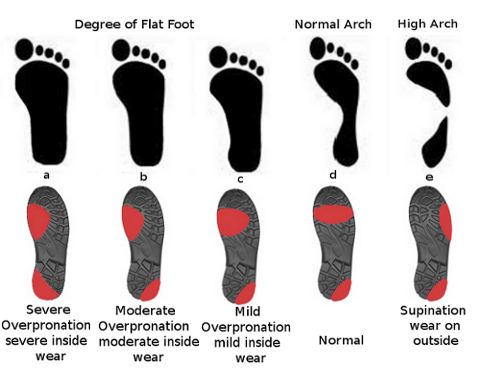
Credit: www.totalfootcarenrv.com
Repair Options
The sole of a shoe wears out due to constant friction with the ground, leading to natural wear and tear. Repair options include resoling or patching to extend the shoe’s lifespan and maintain comfort. Regular maintenance can prevent premature sole deterioration.
Here are two common repair options you can consider:
DIY Patching:
If you enjoy hands-on projects, DIY patching can be a cost-effective solution. Here’s how you can do it:
-
Clean the Area: Start by cleaning the worn-out area around the sole with a damp cloth. Ensure the area is completely dry before proceeding.
-
Apply Shoe Adhesive: Use a suitable shoe adhesive to coat the worn-out area. Follow the manufacturer’s instructions for drying time.
-
Cut and Shape the Patch: Cut a piece of rubber or leather that matches the color and thickness of the sole. Shape it to fit the worn-out area precisely.
-
Apply the Patch: Apply another layer of adhesive to the patch and press it firmly onto the sole. Ensure there are no air bubbles and that the patch is securely attached.
-
Allow to Dry: Let the patched area dry completely as per the adhesive’s instructions before wearing the shoe.
Professional Resoling:
For a more durable and refined repair, consider professional resoling by a cobbler. Here’s what you can expect from this service:
-
Sole Removal and Cleaning: The cobbler will remove the old sole and thoroughly clean the shoe’s surface.
-
Selecting a New Sole: A new sole will be selected to match the original in size, shape, and color.
-
Attachment: The new sole will be securely attached using specialized adhesives and stitching techniques for durability.
-
Trimming and Shaping: The cobbler will trim and shape the new sole to perfectly fit the shoe’s design.
-
Finishing Touches: The shoe will be polished and returned to you in a like-new condition, ready to wear.
Whether you choose to patch your shoes yourself or opt for professional resoling, repairing worn-out soles is an excellent way to prolong the life of your footwear and save money in the long run. Regular maintenance and repair can also prevent premature deterioration, ensuring your shoes remain comfortable and stylish for longer.
When To Replace Shoes
The sole of a shoe wears out over time due to constant friction and pressure from walking. To ensure proper foot support and comfort, it is important to know when to replace your shoes.
Signs Of Irreparable Damage
- Visible holes or tears in the sole
- Uneven or worn treads
- Loose or detached soles
- Significant creasing or deformities
Lifespan Considerations
Factors like frequency of use, type of activity, and shoe quality impact how long shoes last. It’s recommended to replace shoes every 300-500 miles of running or every 6-12 months for daily wear.
Choosing Durable Footwear
Choosing durable footwear is essential for ensuring long-lasting comfort and protection for your feet. When it comes to selecting the right shoes, it’s important to understand the factors that contribute to the wear and tear of the sole. By paying attention to material selection and opting for brands known for durability, you can make informed decisions about your footwear that will save you time and money in the long run.
Material Selection
The materials used in the construction of shoes play a crucial role in determining their durability. High-quality, durable materials such as rubber, leather, and EVA foam are known for their ability to withstand regular wear and tear. When shopping for shoes, look for these materials in the soles and uppers to ensure longevity and resilience.
Brands Known For Durability
Several brands have built a reputation for producing footwear that stands the test of time. Brands such as Nike, Adidas, and Timberland are known for their commitment to using high-quality materials and innovative construction techniques. When investing in a pair of shoes, consider these reputable brands to ensure you are getting a product that is built to last.

Credit: www.footminders.com
Frequently Asked Questions
How Do I Stop My Shoe Soles From Wearing Out?
Preventing shoe sole wear can prolong the life of your footwear and maintain comfort. Here are some tips to help minimize sole deterioration:
-
Rotate Your Shoes: Avoid wearing the same pair of shoes every day. Rotating between multiple pairs allows each pair to “rest” and recover from the stresses of daily wear, reducing sole wear.
-
Choose Quality Shoes: Invest in shoes made from durable materials with quality construction. Higher-quality shoes often have tougher soles that resist wear better than cheaper alternatives.
-
Use Protective Sole Guards: Apply protective sole guards or overlays to the bottom of your shoes. These thin, adhesive-backed layers can provide an additional barrier against friction and abrasion, prolonging sole life.
-
Avoid Excessive Walking on Rough Surfaces: Limit walking on rough or abrasive surfaces like concrete, gravel, or uneven pavement, as these can accelerate sole wear. Whenever possible, choose smoother pathways or surfaces.
-
Maintain Proper Footwear Care: Clean your shoes regularly to remove dirt, debris, and moisture that can contribute to sole deterioration. Use appropriate cleaning methods for the shoe material to avoid damaging the soles.
-
Monitor Your Walking Technique: Be mindful of your walking technique and gait. Avoid dragging your feet or scuffing the soles excessively, as this can accelerate wear. Try to walk with a smooth, natural stride.
-
Address Sole Wear Promptly: Regularly inspect your shoes for signs of sole wear and address any issues promptly. Small patches or repairs can prevent further damage and extend the life of your shoes.
-
Consider Aftermarket Sole Protectors: Some aftermarket products, such as rubber sole protectors or toe taps, can be applied to the soles of your shoes for additional durability. These can be especially useful for high-wear areas like the toe or heel.
-
Reinforce High-Wear Areas: If you notice specific areas of your shoe soles wearing out quickly, consider reinforcing those areas with patches or overlays to provide extra protection.
-
Consult a Cobbler: If you’re experiencing significant sole wear despite preventive measures, consult a professional cobbler. They can provide recommendations for extending the life of your shoes and may offer repair or reinforcement services.
What Causes Soles Of Shoes To Wear Away?
The soles of shoes wear away due to friction with walking surfaces like concrete or asphalt. Factors like gait patterns, shoe quality, frequency of use, and environmental conditions also contribute. Improper fit and lack of maintenance can accelerate wear.
Why Do The Bottom Of My Shoes Wear Out So Fast?
The bottoms of your shoes wear out quickly primarily because of friction from walking on rough surfaces like concrete or asphalt. Additionally, using shoes made from poor-quality materials can also contribute to faster wear and tear.
Why Do The Soles Of My Shoes Wear Out Unevenly?
Uneven wear on shoe soles can result from walking pattern, shoe design, or foot alignment. Overpronation or supination may cause uneven wear. Regularly check and replace worn-out shoes to avoid discomfort and potential injuries.
Conclusion
Understanding why shoe soles wear out is essential for extending their lifespan. By knowing the factors like walking patterns and shoe quality, you can take steps to prevent premature wear. Regular maintenance and investing in high-quality shoes are key for long-lasting footwear durability.
